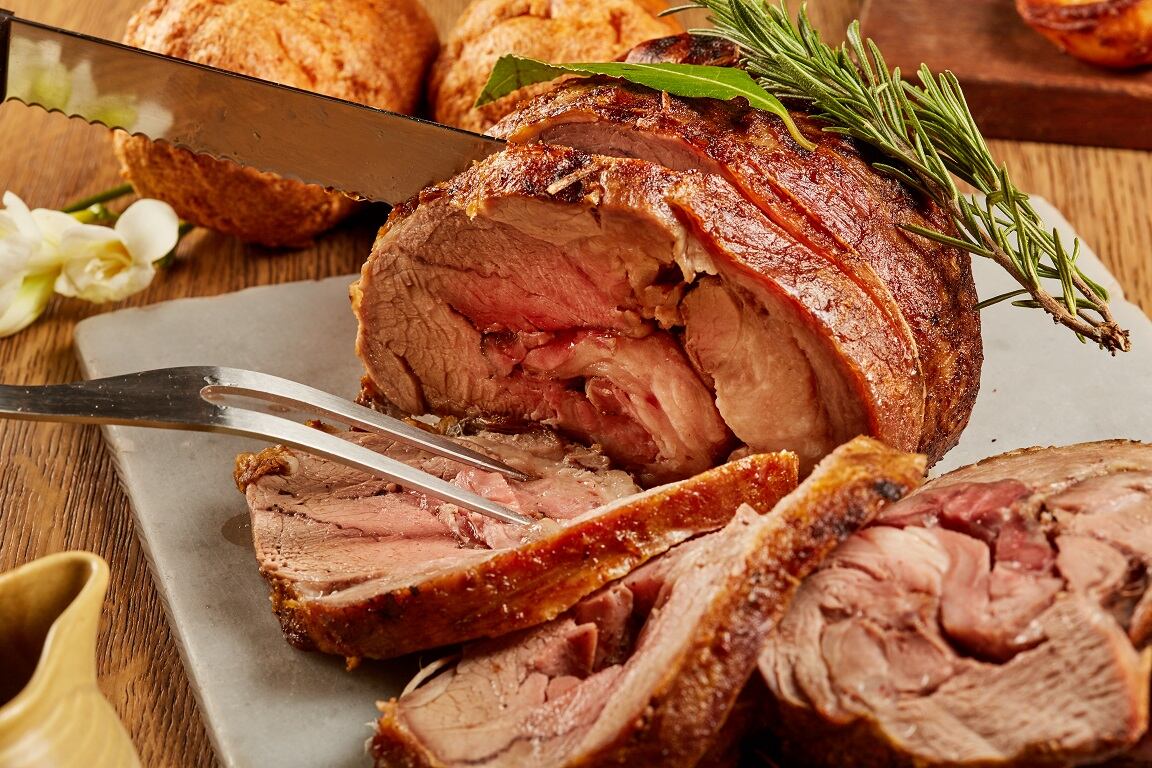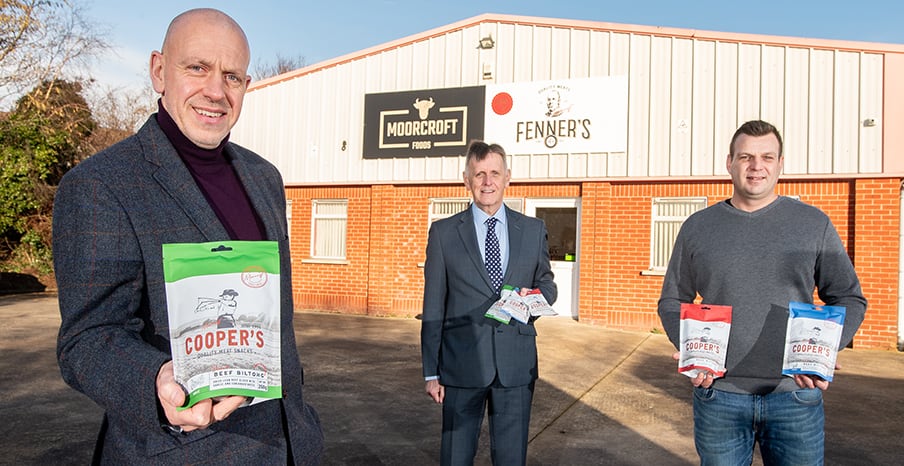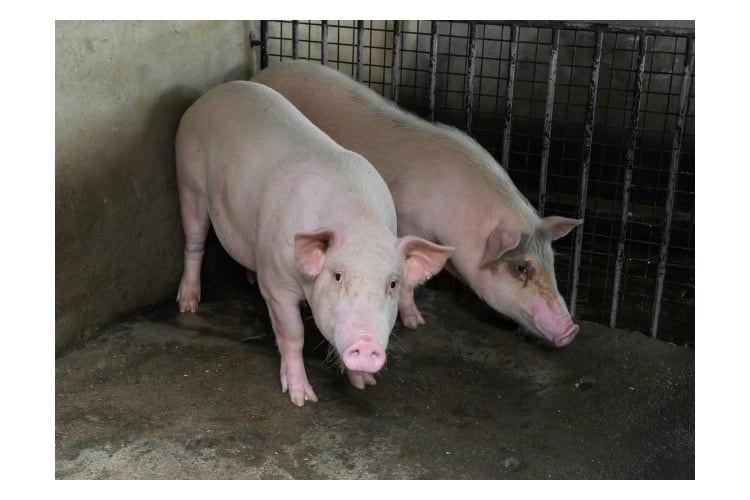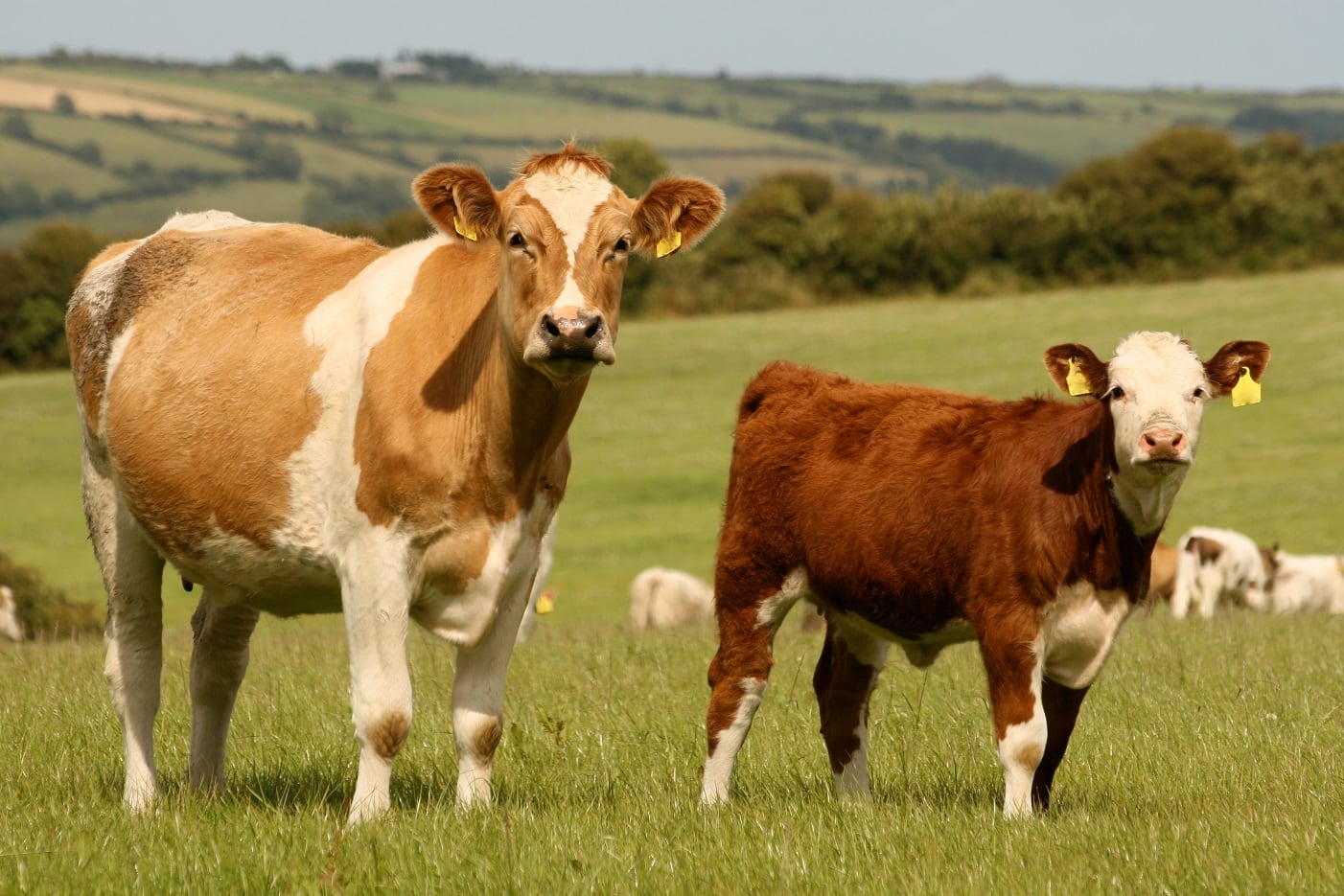For the four weeks ending 26 December 2021, retail sales of meat, fish and poultry reached £1.9bn, purchased by 98% of households, according to Kantar data just published by AHDB.
Total value and volume sales were down, and turkey lost share to all other proteins, but spend on red meat roasting joints rose by 2.2% year on year. Lamb was the only roasting cut to post year-on-year growth with both pork and beef roasting joint sales down year on year.
Most beef cuts still outperformed 2019, however, including burgers, ready meals, pies and pastries, with a trend of trading down expected to continue for inflation-hit consumers in 2022.
Nielsen data for Scotland paints a similar picture with value and volume sales of fresh red meat failing to reach the giddy heights of 2020 in the 52 weeks to January 15, 2022, but up 8.8% in value and 2.5% in volume versus 2019 figures.
Antoine Legendre, category manager at Quality Meat Scotland (QMS), says: “This is mostly driven by sausages (+19.7% in value) and fresh beef (+6.1% in value), but all proteins are growing. Red meat in retail has benefitted from the increase in at-home consumption thanks to its versatility.”
Shoppers graduated from bulk buying mince in the first lockdown to higher priced cuts such as steaks to replicate the restaurant experience at home. Kantar data for the 52 weeks to October 3, 2021 reported 8.1% value growth for premium brand and premium private label meat in Scotland.
Sustainability
Above and beyond eating habits, shoppers and therefore the whole industry have focused more on meat's environmental impact. With the pandemic and COP26 in Glasgow also reigniting consumer interest in provenance and shopping locally, the narrative around meat and sustainability is being reshaped.
“According to IGD, red meat is in the top three categories for which buying locally to support local businesses is important,” says Legendre. “The pandemic drove younger shoppers into butchers’ shops for the first time. The argument around local diets being better for the environment will continue to grow.”
Research by Kantar and The Knowledge Bank in December 2021 suggests eco-active shoppers could represent 62% of the population in Scotland by 2030.
Stuart Ashworth, chief economist at QMS, says: “International collaboration is building through initiatives like the Global Meat Alliance and the Global Roundtable for Sustainable Beef. These are examples of where co-operation throughout the supply chain at a pre-competitive level will contribute to securing a marketplace for meat.”
Justin Sherrard, global strategist for animal protein at Dutch financial services company Rabobank, says the meat sector should view sustainability as an opportunity rather than a risk.
“Everyone’s trying to show how they’re reducing their impact and, because we tread relatively heavily on the world in animal protein, it’s easier to show how you’ve reduced your impact than it is in other parts of the whole food system,” says Sherrard.
“Individual companies are taking great strides, setting ambitious goals and starting to go after them, whether that’s in the marketing of a carbon neutral product, high animal welfare standards or products that come from production systems where antibiotics are not used.

“There’s been a coming of age around sustainability initiatives, shifting them from a smaller project for those deeply committed to a more mainstream offering. It’s about helping consumers to make that choice and to feel better about the meat they’re consuming.”
Earlier this month, agri-food tech company Elemental announced its first licensing agreement to supply Dawn Meats & Dunbia with innovative protein and fat recovery process technology expected to capture 15% more human edible food products from every carcase they process.
Niall Browne, CEO of Dawn Meats & Dunbia said: “We’re constantly looking for ways to increase the efficiency and sustainability of our operations. The installation of this new technology is expected to deliver 20% of our annual Scope 1 reduction target, helping us to achieve an ambitious 58% overall reduction in absolute Scope 1 and 2 emissions by 2030.”
Meanwhile, messaging from the plant-based sector has evolved from its original headline-grabbing ‘we’re going to save the world’ approach, says Sherrard, following a backlash of negative publicity questioning its sustainability.
Plant-based brands can no longer say ‘eat me because I’m not beef’, he says. “People are understanding the beef they’re eating in Europe or the UK has actually got a fragment of the sustainability footprint of the global averages thrown around.”
Projections the plant-based category would capture 10%-plus of animal protein sales within a few years were unrealistic, he says. Plant-based will continue to grow but is currently outperformed by growth in meat sales.
Health & NPD
Just as sustainability can be turned into an opportunity for the meat sector, so too can rising interest in health and nutrition.
Ashworth highlights an opportunity to reposition meat with consumers through innovative marketing, product development and addressing the concerns of consumers seeking a balanced healthy diet from sustainable food sources.
Kieran Bansi, head of category management and shopper marketing for Peperami and Jack Link's, says: “High protein, lower sugar and lower calories have become key benefits consumers are looking for and meat snacks deliver on and, as a result, the category has continued to grow from strength to strength.
“Today most protein consumption takes place as part of the centre plate main meal but, with over 70% of us snacking at least once a day, there is huge headroom for meat snacking to grow even further in the snacking territory.”
Bansi says the Jack Link’s range of beef jerky, biltong and protein beef bar lines is driving category growth among consumers looking for taste and health with its lean beef high-protein and low-calorie content.
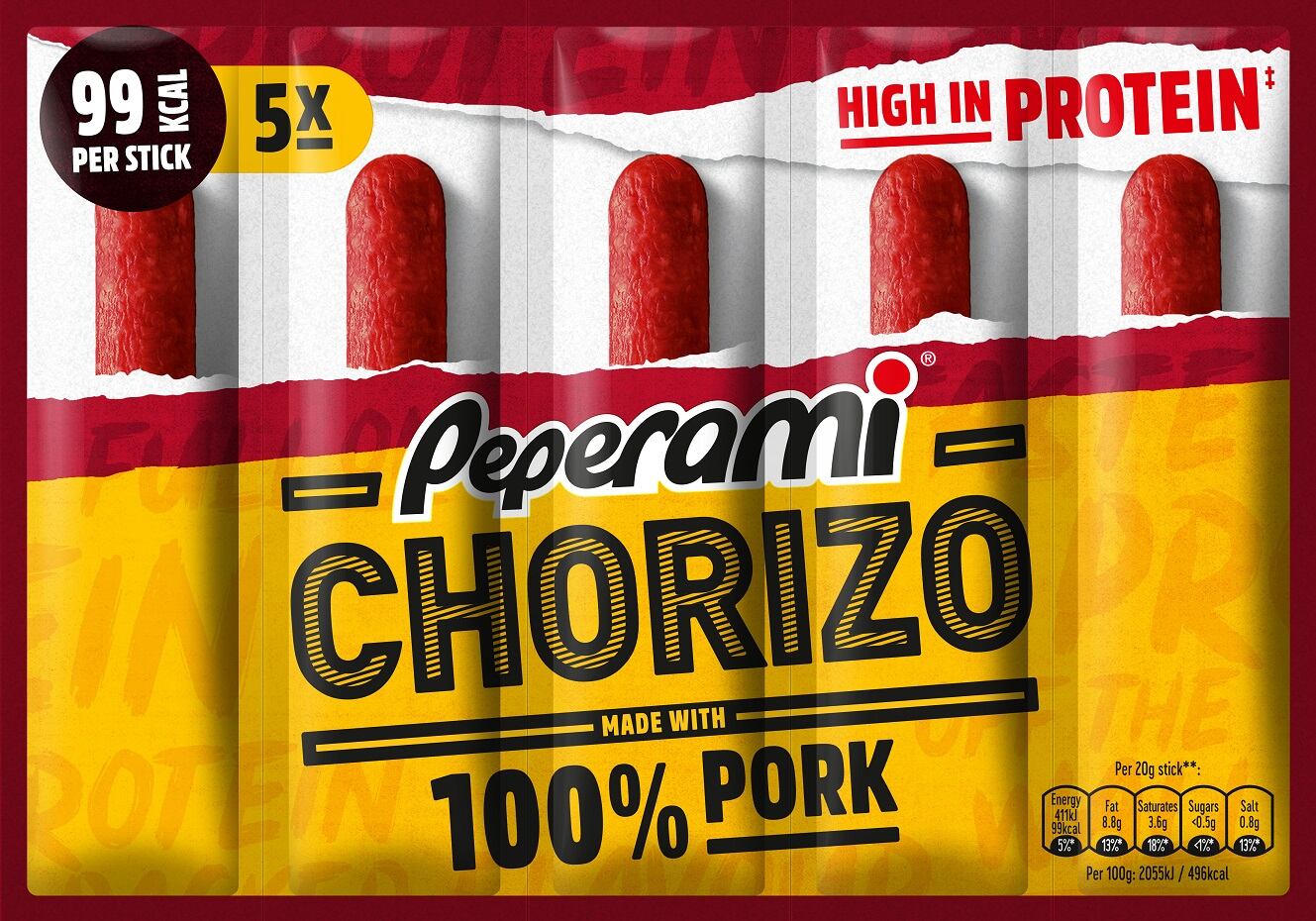
The total meat snacking category has grown by over 85% in the last five years, says Bansi, driven by NPD such as Peperami’s latest launch, a premium Chorizo five-pack targeted at lunchtime and afternoon snacking opportunities, particularly among young adults.
It's encouraging to see some of the real progress being made by the industry, especially in the face of what analysts affectionately call 'strong headwinds'.
“The challenges are varied but it’s quite a list,” says Justin Sherrard, global strategist for animal protein at Rabobank, citing inflation across input costs from animal feed and agri commodities to freight, labour and energy.
“We’re seeing a squeeze on margins across all food but with animal protein, because it’s such a labour-intensive operation, you really do feel that added cost very acutely.”
High energy costs and lack of labour prompted Moy Park to temporarily suspend live bird processing at one of its Northern Ireland sites in January, with Manufacturing NI calling for Government action addressing the energy and labour crises before other firms follow suit.
Martin Morgan, executive manager of the Scottish Association of Meat Wholesalers, says: “Due to the UK Government’s intransigent and dogmatic approach to immigration, there is every indication that labour shortages will persist throughout 2022.”
Supply & trade balance
As the industry confronts these pressures, what shape is general supply in and how is it likely to fare? Latest forecasts from AHDB indicate a 12% boost for sheep meat production in 2022, against low cull figures in 2021 after many lambs were brought forward in late 2020 ahead of Brexit. Lamb consumption is expected to drop as inflation bites for consumers, but exports are forecast to climb.
For beef, production is forecast to rise by 1% this year, with more Irish supplies coming into the UK market but UK exports climbing by 15% to service strong demand on the Continent.
Pig production and consumption is expected to fall by 2% in 2022. “The pressure on the pig industry is immense at the minute,” says Chris Gooderham, head of markets, AHDB.
Complex and costly export rules and associated bureaucracy are making it impossible for some Scottish businesses to maintain supplies to long-established customers in EU countries.
A Department for Environment Food and Rural Affairs survey in December 2021 identified a backlog of around 170,000 pigs, directly linked to the labour shortage and unlikely to be cleared until the summer.
Pig meat exports are forecast to rise 9% in 2022. “Until the supply-demand balance for pigs in the EU is readdressed, prices are going to remain weak,” says Gooderham. “Decline in Chinese demand has somewhat derailed the market, but lower pig numbers in the US and rising prices in China are offering some hope of a recovery later in 2022.”
Sherrard highlights the impact of animal disease on global meat trade, with avian flu pushing up poultry prices at a time when other input costs are also rising, but African Swine Fever lowering EU pig prices by boosting supply through restriction of exports.
Post-Brexit Trade
Exporting after Brexit has not been without its problems. Morgan says: “Complex and costly export rules and associated bureaucracy are making it impossible for some Scottish businesses to maintain supplies to long-established customers in EU countries.”
Glesni Phillips, data analyst at Hybu Cig Cymru (Meat Promotion Wales), also cites short-term issues stemming from increased paperwork for EU exports and pandemic disruption but also opportunities.
“Prior to the pandemic, Welsh Lamb exports to the Middle East increased by around 400% in two years, and HCC is currently investing in the region to capitalise on this demand. The recent opening of the US market too, following a decade of work to raise the restrictions on beef and lamb produced in the UK, will offer opportunities for Welsh farmers and processors.”
Sherrard says Brexit has not changed trade flows between the UK and EU much to date, but the introduction of veterinary inspections for EU imports on July 1 may have an impact.

